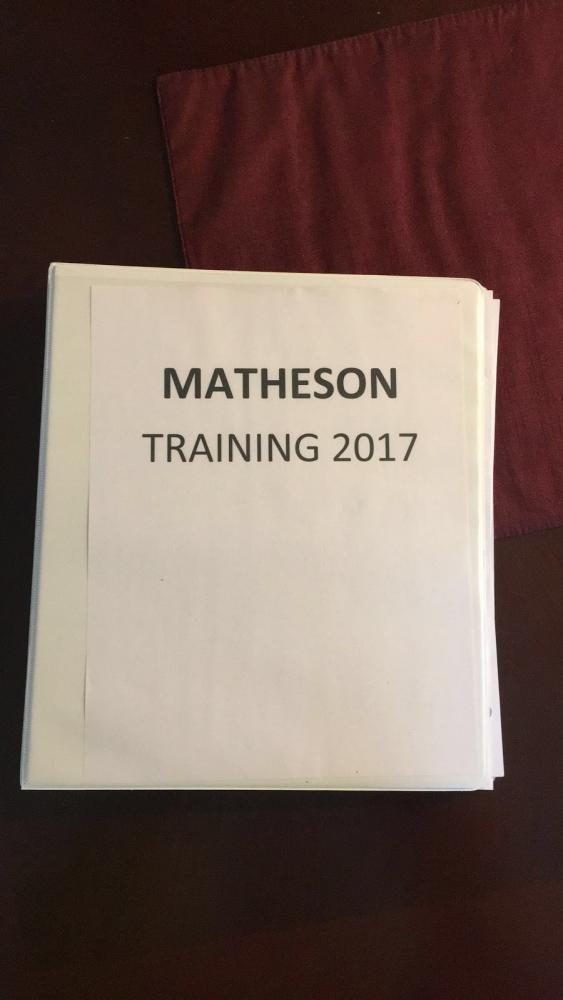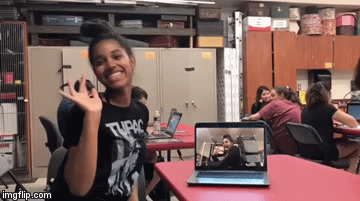Ill for income
Cecilia Vanti’s case binder. This specific binder contained all of the information she needed for a specific case. Some of the paperwork includes a script, a checklist of things to make sure the doctor asks, etc.
June 5, 2017
She sits in the office, waiting for the doctor to come in. She’s suffering from a painful illness, due to a terrible blockage in her stomach. The doctor finally enters the exam room, and after about an hour of examination, tells the woman that her illness is severe and she will need to be rushed into surgery immediately. The patient refuses, not making his job easy. The thing is, they both know she’s faking.
This was the hardest case for Cecilia Vanti to work on. She has been doing standardized patient work for two years, and has worked on a variety of cases during this time period. A standardized patient or “SP” is a person who has been trained to portray a patient dealing with a medical issue. They do this to teach and evaluate medical school students. Standardized patients help medical school students with communication skills and offer real encounters with ‘patients’ before they go into the workforce.
“Practicing one-on-one with SPs in the learning lab lets students soak in feedback that they are given by the SP. For the student, being able to practice communication skills before they are responsible for real patients with real problems, allows them to focus on listening to the patient,” said Janice M. Kregor, Medical Doctor at the UK College of Medicine.
Vanti has worked on about 10 or 15 patient scenarios, and one medical professional case. She has worked at both a medical school and a test prep center.
How a certain case is conducted depends on the program and whether it is a final exam. The extent of an exam also depends on the level of a student. For example, the exam for a first year student will be much more basic compared to that of a second year medical school student. A first year student might perform a physical, while a second year student might perform something much more complex, like a pelvic or hernia exam.
An exam can vary from 45 to 15 minutes. All students are made aware that the standardized patients are actors, not real patients. First year medical school students usually get 30 minutes to 45 minutes for an exam, while third year students receive 15 minutes for an exam.
After the exam is over, the students’ work is graded by faculty.
“There’s a room with a bunch of monitors, it’s called the theater, and it looks like a movie theater, and has movie theater seats. There’s maybe five different monitors in the theater and faculty will actually be watching the students and taking notes and grading them,” Vanti said. “It’s also filmed so that if faculty can’t make it that day, they can watch it later. Also, if a student challenges, they can go back to the tape to see whether the challenge has merit.”
Vanti then has to give feedback on the doctor’s communication skills. Whether the doctor asked her what her name was, whether the doctor introduced himself, and whether the doctor made her feel like a partner, are all on Vanti’s checklist.
“That’s how they pass the test. If they do what they’re supposed to do ask us the questions, make the right diagnosis, and conduct the physical in the right way,” Vanti said.
While she has stayed at this job for two years, it was a hard to get the job in the first place. Both applying and training for the job required lots of patience and follow through.
“It’s very hard to become a standardized patient because it’s kind of a nice gig, it’s certainly a more interesting gig than waiting tables as a side job,” Vanti said. “I was on a waiting list for a long time, maybe three or four years. Then I got an audition, and after the audition was a callback, and then they actually hired me.”
Vanti describes the training as very intense. She explained that for every case learned, it’s mandatory to train for it, whether with veterans who have done the case before, or the person who actually wrote the case. If patients have to perform a case which they received in the past, they are encouraged to go for a half day training session to jog their memories.
The faculty at the program then train potential patients for the medical information needed to complete the case successfully. A physical is usually done by the trainer, so that the potential patient knows their organ placement, to know if the doctor is checking what he or she is supposed to.
Vanti says that training usually takes two full days, and then another eight hours to learn the case
Vanti frequently performs cases which she has already done. Especially since it is finals season, she finds herself revisiting old cases. “I might find myself playing the same case 35 times in one week,” Vanti said. “During finals, I might be playing a case five times a day for four days.”
Having to remember information from all of these different encounters to give accurate and helpful feedback is a difficult task. Also, keeping a mental checklist of what the doctor was doing is a hard duty to fulfill.
“The challenging part about this job is to remember who said what to you, because you are going to have to remember and talk to them [faculty] about it,” Vanti said.
Another challenge with this job is dealing with disrespectful doctors. Vanti’s daughter, Michelle Vanti, recollects times where her mother would come home agitated. Michelle would see her mother upset either because a doctor didn’t take the exam seriously due to her being an actor or because the doctor thought that they were better than her.
Vanti also struggles with letting the doctors fail, if they go on a completely wrong path, and aren’t asking the questions they are supposed to. She finds herself wanting to give the doctor a hint to get them on the right track, but realizes this would be doing more harm than good.
She says that the easiest part of the job is memorizing and learning the case.
Even though she struggles every now and then, she has taken a lot with her from this job, and feels she has made a difference with the students she’s seen.
She sees improvement in students which she had had in their first year who are now third year students. “I feel like I’m somehow a part of that, actually making them a better doctor,” she said.
While she has made an impact on the students, they have also made an impact on her. Vanti says that acting as a standardized patient has helped her communicate with her real doctor. “Now I know all of the questions to ask, and I know if they are not communicating at the standard of clinical excellence,” she said.
Acting as a standardized patient has also improved her acting skills.
“I think it has made me a very good listener. My listening skills have improved tremendously, because I have no idea what’s gonna come out of their mouth so I’m like really actively listening to them so I know what response to give them,” Vanti said.
Not knowing what the doctor is going to say also improved her improvisation skills.
Vanti loves her job, and says that she wouldn’t consider leaving it unless she got ‘an amazing Broadway gig.’ She enjoys what knowledge she picks up from the job.
“I learn a lot actually, I interact with very smart people, medical people, ethics committee people, really smart, interesting, people. The other thing is, I think that it [the program] just makes them better doctors and I like being a part of that, because there’s nothing worse than going to the doctor and feeling like he doesn’t hear what you’re saying, and he’s not interested in collaborating with you, and he doesn’t care,” Vanti said.




